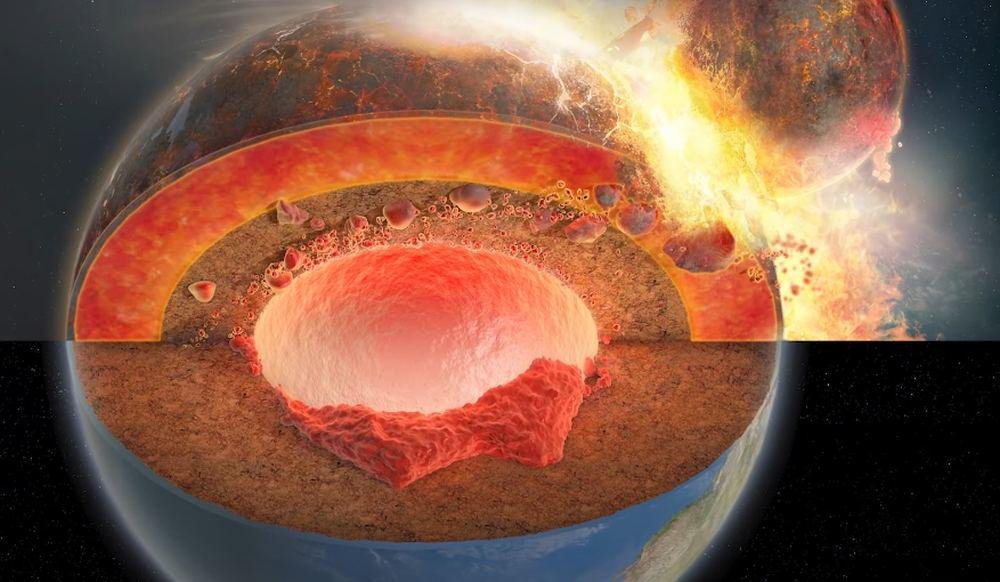While most scientists search for planets beyond Earth, An interdisciplinary research team may have discovered fragments of an ancient planet in our own region. Two massive seismic anomalies in the Earth’s core may actually be “remnants of buried mantle material from Theia,” a protoplanet that collided with us and formed the Moon, according to a new study recently published in the journal Nature.
Discovered in the 1980s, these two continent-sized fragments are called large low-velocity regions (LLVPs) by seismologists. One of these rocks, known for their high iron concentrations that change the speed of seismic waves, is located under Africa and the other is located under the Pacific Ocean.
The current study, based on computational fluid dynamics methods, not only provides important insights into the mystery of LLVPs in the Earth’s interior, but also provides evidence for the existence of Theia in addition to the debris that formed the Moon during the “giant impact.” ” ” Occurred 4.5 billion years ago.
The material that forms the Moon is the same as the LLVPs in the Earth’s core
The new paper concludes by calling the “impact element that produced the Moon as the source of Earth’s basal mantle anomalies.” The so-called Giant effect as the original source of LLVPs.
The study’s main author, Qian Yuan, a postdoctoral researcher at the Caltech Seismology Laboratory in Pasadena, USA, was attending a seminar on planet formation when the speaker talked about the giant impact. At that time, the researcher noticed that the Moon was relatively rich in iron.
“Shortly after, Mikhail [Zolotov] After I said that no one knew where the multiplier was, I had a ‘eureka moment’ and realized that Iron-rich impactor may have turned into specks in the mantleYuan said.
Consequences of Theia sinking into the Earth’s core
According to the study, our “canonical giant impact simulations” showed that when Theia collided with Earth, it released an enormous amount of energy that pulverized the molten material of the two protoplanets. One of the fragments escaped from Earth’s orbit and the other melted into the Moon, but most of the impactor remained submerged in the molten form of the Earth.
However, according to Yuan’s simulations, a significant portion of the energy provided by the collision remained in the upper regions of the Earth and did not penetrate the core. This means that Our lower mantle has not warmed as much as previous research theorized.
Contrary to traditional thought about the homogenization of the early Earth, the new findings show that “the giant impact that formed the Moon appears to be the origin of the Moon,” co-author Hongping Deng of the Shanghai Astronomical Observatory said in a statement. “The initial heterogeneity of the mantle marks the starting point of Earth’s 4.5 billion years of geological evolution.”
Stay up to date with the latest studies on Earth’s formation at TecMundo. If you wish, take the opportunity to discover what the Asthenosphere is and its importance for our planet.
Source: Tec Mundo
I’m Blaine Morgan, an experienced journalist and writer with over 8 years of experience in the tech industry. My expertise lies in writing about technology news and trends, covering everything from cutting-edge gadgets to emerging software developments. I’ve written for several leading publications including Gadget Onus where I am an author.













